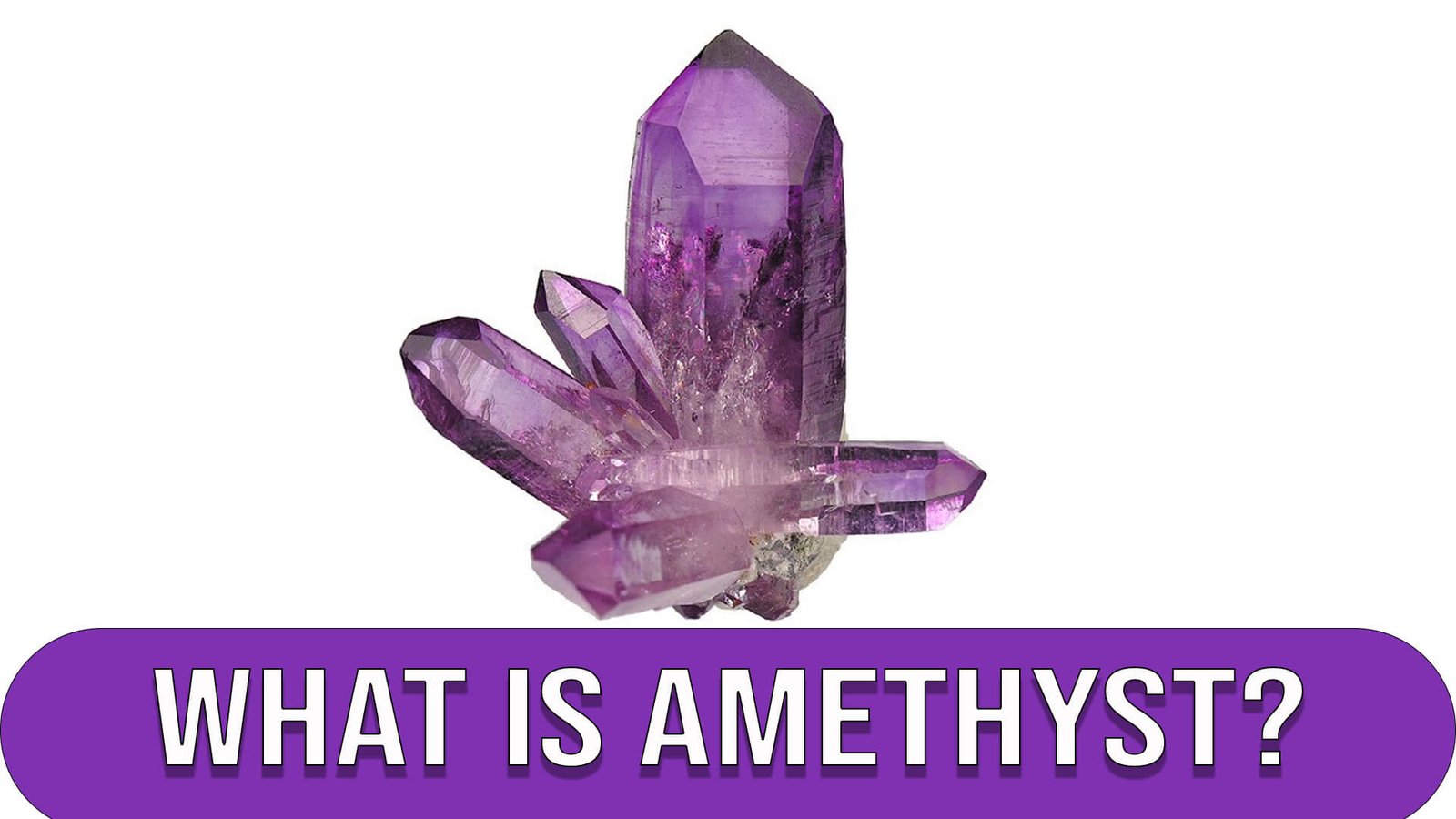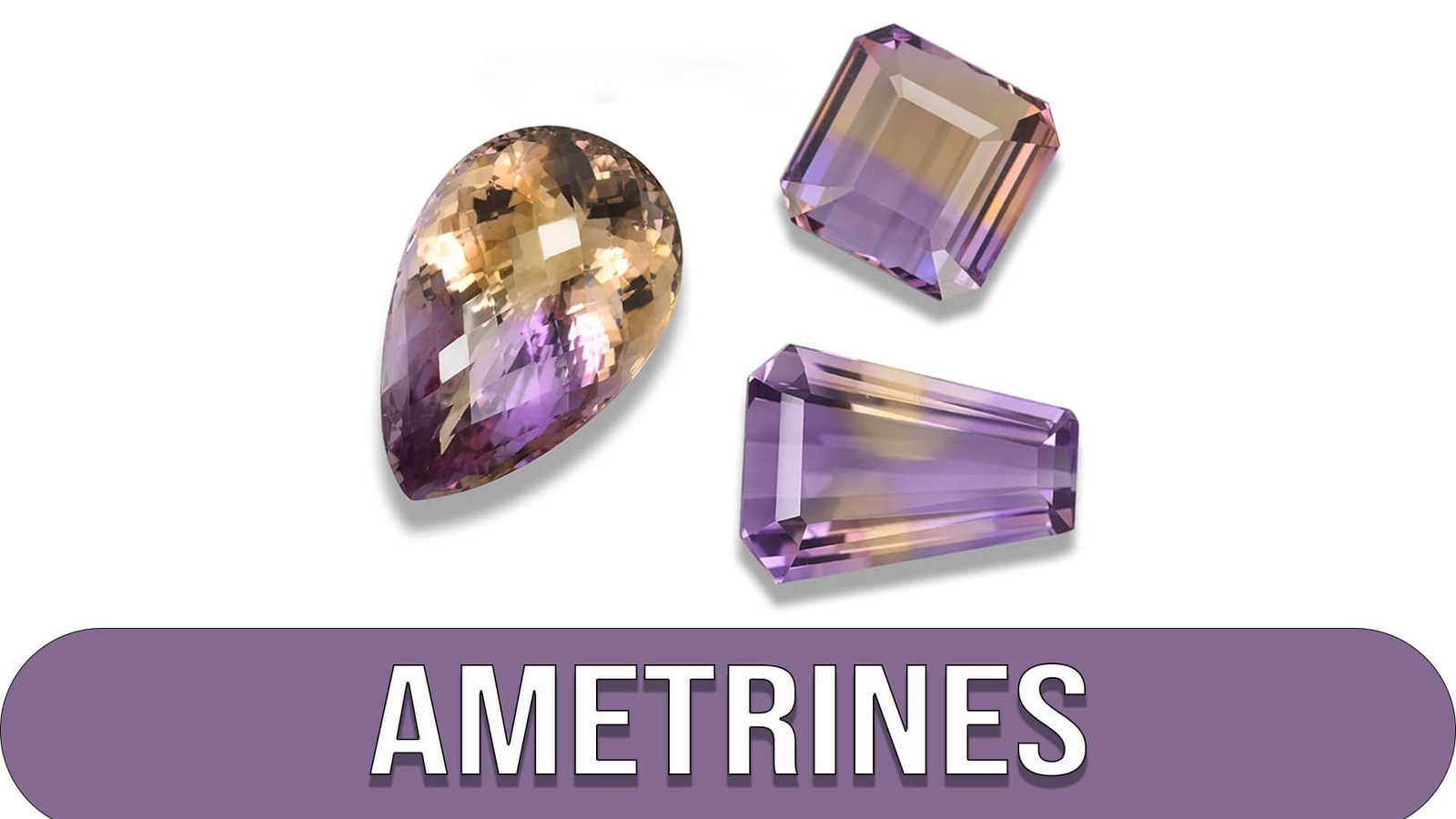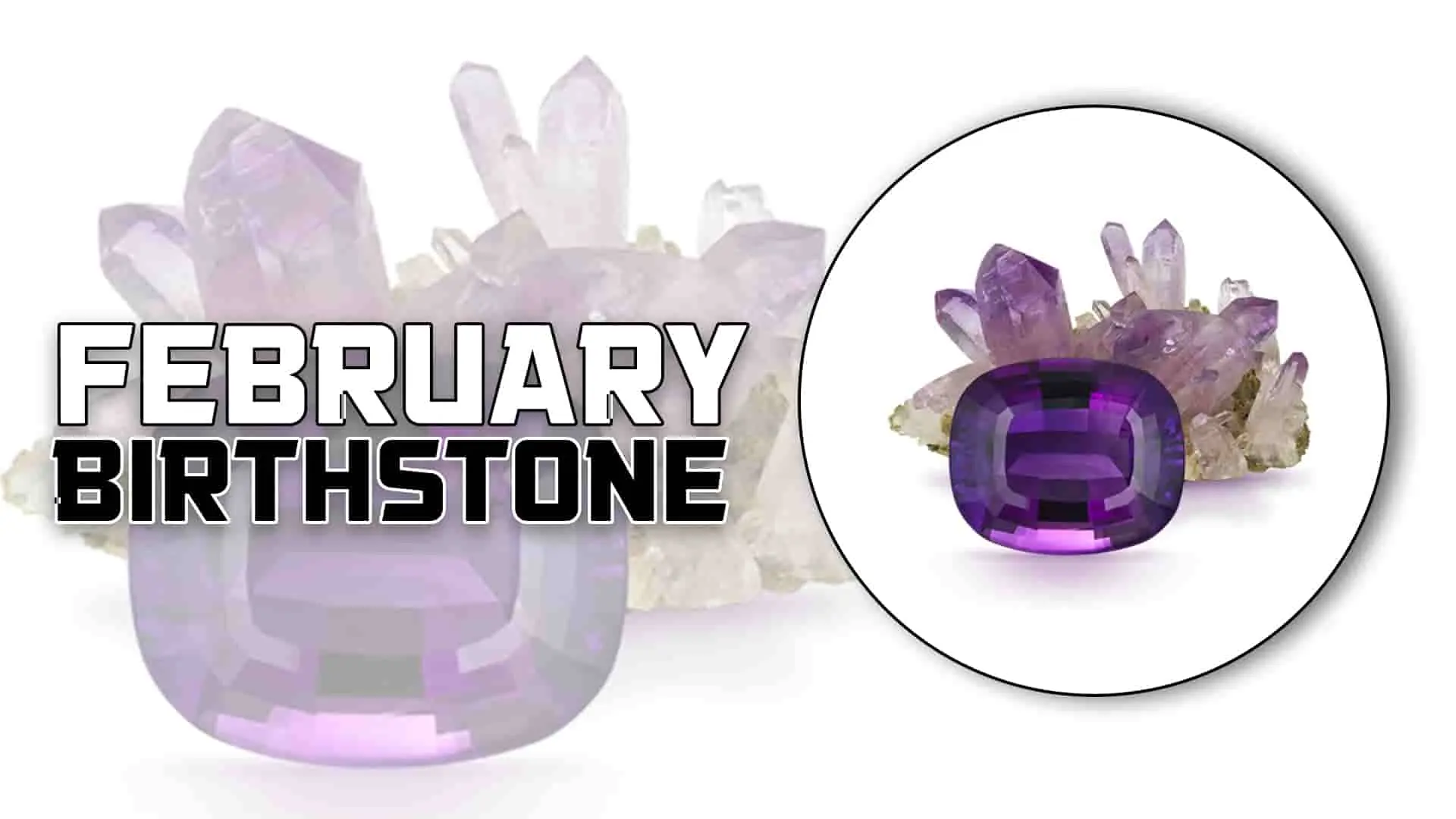Amethyst has long captivated people with its alluring violet hues and deep meaning. It is an intriguing gemstone connected to February. This desirable gemstone has been treasured for its beauty and is thought to have special abilities throughout history, from ancient times to the present. Amethyst, the birthstone for February, emits a mysticism and elegance that captivates the hearts of those fortunate enough to acquire one. Let’s explore the intriguing world of amethyst, learning about its history, characteristics, and profound meaning for people born in February.
February’s modern and traditional birthstone is amethyst, with a long history and strong associations with spirituality and love. This purple gem has gained popularity as a jewelry stone due to its beauty, accessibility, and durability. You can find them everywhere, from essential stud earrings to delicate bracelets to striking statement rings. Find out more information on this fantastic jewel.
What is Amethyst?

The birthstone for February is amethyst, one of today’s most popular crystals and prized for its vivid purple hue. It’s a type of quartz, a silica-based hard, crystalline mineral. In the zodiac, Pisces and Aquarius are linked to this stone. The jewel customarily given at the sixth wedding anniversary is amethyst. Amethyst may be found in Brazil, Canada, India, Madagascar, Namibia, Russia, the U.S., Uruguay, and Zambia.
Huge drinking containers used for water and wine were once carved from this stone, and because of its deep purple hue, amethyst is related to Bacchus, the Greek god of wine. Cleopatra is reportedly wearing an amethyst signet ring to symbolize wisdom and love. Roman wives believed that wearing amethyst would contribute to ensuring fidelity.
In the book of Revelations, amethyst was one of the 12 gemstones that lined the walls of Heaven. Its deep color is related to the wine that was changed into Christ’s blood.
History of Amethyst
Amethysts were used in amulets by ancient Egyptians as a form of prayer and protection from danger. The gem was a favorite of Catherine the Great of Russia, who amassed a collection of amethyst necklaces, earrings, and other beautiful jewelry. It used to be valued on par with gems like sapphire, emerald, and ruby.
Color Diversity of Amethyst
Amethyst, which only appears in purple, has a wide range of purple tones, from highly light whitish-lilac to deep, rich, dark purple or violet-black colors. Reddish or bluish undertones are possible, adding even more depth to the stone’s color. These undertones vary depending on the gem’s overall composition and are brought on by various impurities and trace elements in the stone’s crystal structure.
Variations in Amethyst
Siberian Amethysts

Amethysts with a deep purple color are the most valuable, and stones with this color with red and blue flashes are referred to as “Siberian Amethysts.” The most expensive of its kind, these diamonds. The word was applied initially to stones of this caliber from Siberia, a now exhausted source. Today, irrespective of the origins, the term is used to describe any amethyst that exhibits this color. “Siberian quality” denotes the most excellent standard for the amethyst color. Following “Siberian,” most amethysts are graded from AAA to A. Stones with more color are graded AAA. A grade is awarded to lighter stones.
Remember that although these grades are helpful for buying, they must be standardized. Jewelers may use different grading standards and amethyst rates.
Rose de France Amethysts

There are also fans of light, pinkish violet, or lilac amethysts. This shade is known as “Rose de France.” These stones can give your jewelry a delicate, romantic touch. Although most people choose amethysts with a deep purple hue, and prices reflect that, you can eventually select the best coloring. It is your jewelry, after all. It’s important to like your wardrobe.
Ametrines

The yellow/red-orange quartz variant, citrine, and amethyst can occasionally combine to make a crystal. Ametrine is the name given to the outcome. Significant purple and yellow or reddish-orange zones can be seen in this diamond. Factors carved these bi-colored stones to emphasize the colors.
Amethyst: February Birthstone Formation
Amethyst’s color is enhanced by natural radiation, and with time, the stone’s color may vary. Although some amethysts may age and appear lighter or washed out, this can give vintage jewelry a delicate and airy quality. The most precious amethysts are frequently those with the deepest purple and crimson hues since they are the rarest. However, other colors might be just as lovely and should be considered for their unique beauty.
Meaning and Symbolism of February Birthstone: Amethyst

The English word “amethyst” comes from the Greek word amethysts, which means “not drunk” or “a remedy for drunkenness.” The Ancient Greeks thought that carrying an amethyst allowed one to consume alcohol all night long without getting drunk. Different astrologers have different opinions on this special birthstone which are as follows:
- Early Greek mythology connected amethyst with Bacchus, the deity of wine, due to its color resembling wine.
- Amethyst was said to keep wearers sharp-witted and clear-headed in conflict and commercial dealings.
- The romantic ardor of lovers could be controlled.
- Strength and intellect are also supposed to be transmitted through amethyst.
- Amethyst helps cure wounds because, in the Christian tradition, its colors symbolize Jesus’ injuries and suffering.
- Its calming influence provides restful dreams that bring clarity and harmony to the waking consciousness.
- Amethyst symbolizes inner strength and self-determination for those born in February.
- The love patron saint wore an amethyst ring with a sculpture of Cupid.
- Amethyst increases mental acuity and cleanses you of unfavorable ideas.
- Amethysts were previously thought to have healing properties when applied to pimples.
- People give amethyst to commemorate a couple’s sixth wedding anniversary.
- Possessing an amethyst as a gift in a dream is lucky.
- Giving someone an amethyst in a dream indicates you are forgiving them.
Amethyst Uses and Healing Properties
Due to its emotional connotations, you can frequently use amethyst in meditations and prayers, and tiny amethyst crystals are commonly fashioned into prayer beads. This is particularly well-liked in Tibet as an element of the Buddhist religion. Amethyst crystals are natural tranquilizers that can induce a relaxing condition. These stones also develop creativity, boost wealth, and encourage personal balance. So, pendants or talismans for protection frequently contain raw, polished, or faceted amethyst.
This common stone initially promotes sobriety and fends against the effects of intoxication. It also supposedly possesses therapeutic abilities. Wine goblets were frequently cut from sizable pieces of amethyst or embellished with amethyst crystals to use the stone as an alcohol deterrent. Amethyst also helps with tissue regeneration, general healing, stress reduction, anxiety reduction, and sorrow relief. Amethyst is thought to increase hormone synthesis, lower heart rate, and improve cardiac health.
Amethyst in Jewelry

Amethyst is widely accessible in all sizes and does not experience a significant increase in cost per carat. Amethyst of lower quality can be cut and formed into beads and other items. Amethyst has a Mohs Hardness value 7.0, making it suitable for everyday wear in rings and other jewelry. Storage near tougher gems should be done cautiously, as there is a chance of scratching.
Care and Cleaning for Amethyst

On the Mohs scale, a measure of hardness, amethyst ranks a 7. This indicates that even while it can be used in rings and other jewelry daily without wearing out, it may eventually need to be re-polished. Amethyst is the birthstone for February, but it is more prone to damage than harder gems like rubies, sapphires, and diamonds, so you risk scratching your jewelry if you wear it next to them. Heat treatment is the most often used technique for improving the color and appeal of natural amethyst. Very dark amethyst can have its color brightened and made more attractive through heat treatment, while pale amethyst cannot have its color made darker.
In some amethysts, it can also get rid of unsightly brown impurities. Some amethyst turns yellow when heated, becoming citrine. When heated, amethyst changes color permanently. It may become slightly more fragile than usual when exposed to intense heat. Therefore, take special precautions to guard its jagged edges and pointed faceted corners. Additionally, keep in mind that some amethyst fades over time when subjected to intense light and that excessive heat can entirely obliterate the color. Even if the stain remains constant with repeated wear, this is not a birthstone you should wear daily to the beach. Amethyst birthstone jewelry can be cleaned with ultrasonic technology, but steam cleaning is not recommended. The safest option is a soft brush and mild soap.
Cost of Amethyst
The average price of an amethyst might change based on the size, color, clarity, and general quality of the stone, among other things. More minor, lighter-purple amethysts are generally less expensive, whereas more prominent, intensely colored specimens are more expensive. Amethysts can be found in various sizes and quality levels, ranging from a few dollars for small, low-quality stones to hundreds or even thousands of dollars for more extensive, high-quality specimens. Notably, outstanding amethysts with distinctive characteristics or exceptional clarity can fetch even more excellent prices. Amethyst’s beauty, rarity, and popularity among gemstone collectors and enthusiasts are ultimately reflected in its price.
Prices for materials of gem quality are $30 to $50 per carat, with extraordinary stones costing up to $100. For each piece several centimeters long, you may buy rough amethyst for $1 to $10. Prices for amethyst geodes can be as little as $10 or as high as $10,000.
Final Thoughts
In conclusion, amethyst, the adored February birthstone, never ceases to enchant and motivate people with its dazzling purple attractiveness. This gemstone, which has a long history and a variety of symbolic connotations, is still regarded as a timeless representation of spirituality, protection, and inner power. Amethyst maintains a unique place in the hearts of February-born people and gemstone enthusiasts alike, whether worn as a personal decoration, utilized as a decorative item, or valued for its metaphysical powers. It is prized for its beautiful beauty and exceptional attributes, which serve as a constant reminder of the profound relationship between nature, birth months, and the allure of precious stones. Accept amethyst’s magic and let its opulent purple hues light your way.





